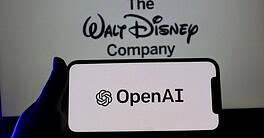Increasing competition, consumerization and the quest for a bigger wallet share have transaction banks eyeing retail divisions for inspiration.

“Wouldn’t it be great for your banking system to understand or even anticipate what your business is trying to achieve?” asks Phil Cantor, executive vice president and chief marketing officer at Intellect Global Transaction Banking (iGTB).
Considering how far computing capabilities have come and the advancements that have been made in enabling technologies–such as artificial intelligence, application programming interfaces (APIs) and the data-sharing possibilities created by open banking and cloud computing–transaction banks should be able to provide simple, intuitive and connected experiences for their corporate customers. Very few do.
“Contextual banking,” usually associated with retail banking, uses data and advanced analytics to provide contextually relevant experiences.
“One of the things that retail bankers do phenomenally well is cross-selling: Because they understand the customer, they understand what the product set is and they understand what their peers are using,” says Andy Schmidt, vice president and global industry lead for banking at business and IT consultancy CGI. He thinks transaction banks have a similar opportunity to fill in the map of what clients look like in order to upsell and cross-sell.
Although not using the term initially, iGTB began working on contextual banking in 2014, and in 2017 renamed its white-label digital transaction banking platform CBX (Contextual Banking Experience), which enables banks to provide “next best action” decision-making capabilities and to offer recommendations.
Contextuality in dynamic pricing, for example, can help a bank encourage its clients’ liquidity managers to invest in products that fit their liquidity objectives, such as environmental, social and governance credentials or balance-sheet objectives, while also aiding working capital management and increasing banking partners’ satisfaction, according to Cantor.
Corporate expectations are driving contextual transaction banking, as companies look for similar experiences with their business-to-business platforms as they have in their private digital lives, notes Mayank Mishra, global head of digital channels at Citi Treasury and Trade Solutions.
“Contextual banking is going to go really far, because banks are going to provide some insightful information that could potentially lead to corporates acquiring more products and services or acquiring more geographies without having to speak to anybody in the bank,” he says. “Corporate banking platforms will become so rich and guided that it will lead to more-coherent interaction.”
Delivering With Data
To provide rich contextual insights, firms need a strong data set from which to work. “Banks have done OK in terms of leveraging data within silos; but they still have a heck of a time normalizing what the record is and figuring out, even at the individual level, who the account owner is—let alone a complex corporate with multiple subsidiaries,” CGI’s Schmidt says.
“When you stand back and look at most banks, once you get underneath the veneer, you’ll find a whole plateful of spaghetti [consisting] of different legacy and proprietary systems from a bunch of different vendors,” adds Mike Rayfield, senior vice president of channels at iGTB.
Fully transforming to provide contextual banking is unrealistic for most banks. Instead, they can investigate an overlay approach by which they can build a digital ecosystem that doesn’t compromise their existing infrastructure.
“Most banks are looking for what’s becoming a de facto architectural model—where the front end is detachable and driven through APIs,” explains Rayfield. “It’s flexible enough to live on top of your plate of spaghetti and be extended to incorporate third parties, with the tooling to allow banks to extend or adapt, together with lots of different integration capabilities at the back to accommodate hundreds, probably thousands, of different touch points.”
In addition to providing an overlay-based platform, iGTB’s CBX has its own “near data store,” which keeps back-office data, such as payments, lending cards, and other data, on the same server as the application for improved performance similar to that of a typical smartphone app.
“Once that data is in there, it allows the front end to get quite clever; because if the front end is built on APIs, those APIs can call that near data store in real time, without going to the back-end systems, since the data is already ingested,” Rayfield says.
The platform vendor has also seen an increasing demand for “headless” deployments, where banks want to offer the contextual experience but have design partners or their internal staff design the user interfaces.
Depending on the inquiry, CBX can display cross-domain data—like an account-balance inquiry that shows those accounts participating in certain liquidity structures, such as sweeps or pools or intercompany loans—and help guide customers to the optimum selection, according to Cantor.
Somewhat ironically, banks historically have not been very good at cash flow forecasting—so they might look to third parties to supplement their online services with things like personal financial management or cash flow forecasting for small businesses, says Rayfield.
In July, Boston-based fintech Centime entered a strategic partnership with First National Bank of Omaha to help entrepreneurs manage cash forecasting. Other banks are stitching cash flow offerings from iGTB or other vendors, such as the Edinburgh-based company The Float Yard, into their banking portals. “By taking a niche service, it adds value and is really useful for remaining relevant to their client base,” he adds.
Leveraging historical data is the holy grail for all banks, according to CGI’s Schmidt, transaction banks have lagged retail banks. “APIs can feed insight into whatever the digital banking solution is while a cloud-based analytical tool can look at the data, but transaction banks need to hold their noses and copy what retail banking has been doing forever.”
API Power
To be fair, open banking has helped retail banks understand the power of APIs, where they can choose to participate with vendors to provide complimentary services that they can incorporate into their platforms. Transaction banks are slowly following suit.
Since the 2017 launch of the CitiConnect API, which lets clients and partners integrate their systems directly with Citi for real-time access to their data and banking services, the platform has processed 1.4 billion corporate-client API calls. “I have never, in my more than 25-years’ experience in this industry, seen anything spread or get adopted as rapidly; and it’s still growing,” remarks Citi’s Mishra, who credits APIs with helping clients innovate.
“We want to be the most convenient, the most insightful and the simplest bank for our customers,” he continues. “We offer a data-driven experience using telemetry and cognitive computing to understand each and every user’s expectation, to create a personalized journey for them; and that’s fundamental to creating a sticky experience and opens up the whole new world of invisible banking, where the convenience of contextual banking-as-a-service is available whenever they want it.”
The next step in the evolution of open banking is open finance, and the UK’s Competition and Markets Authority plans to mandate new rules regarding variable recurring payments and sweeping.
“This will ripple out to incorporate more services across banking,” suggests iGTB’s Rayfield. “There’s also thinking around how it might issue extensions to the rule books around savings and mortgage accounts to expand the current [Payment Services Directive 2] mandate. So, the big question is: When will open banking incorporate traditional transaction banking domains, such as trade finance?”
Open banking, combined with advanced analytics tools capable of connecting disparate data sets, will aid seamless transaction banking experiences. Further API adoption will transform the ways banks interact with their clients, which will be transformative for corporate treasurers.



